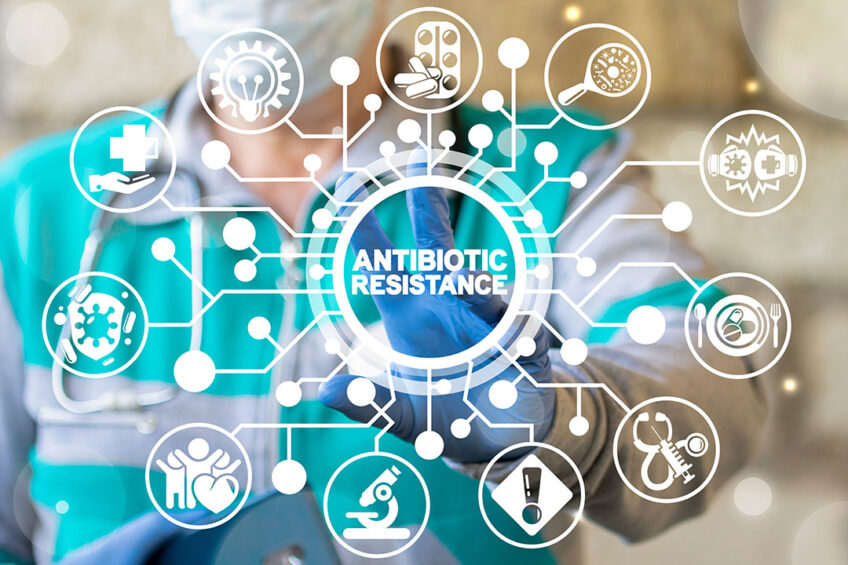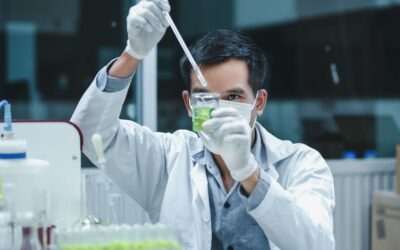
On November 18th, the ‚European Antibiotic Awareness Day‚ (EAAD) is celebrated as part of the contextual World Antimicrobial Awareness Week (WAAW) promoted by the WHO from 18th to 24th November 2022 against antibiotic resistance.
The aim of the occasion is to raise awareness of the threat that antibiotic resistance poses and the importance of their prudent use. The latest data from the European Union, reports in fact, an increase in the number of patients infected with resistant bacteria.
In the Old Continent, the development of antibiotic resistance, caused by the unregulated and inappropriate use of this type of drug, represents a problem of particular relevance to collective health. A more restrained and appropriate use, in fact, makes it possible to counteract the development of new bacteria resistant to a broad spectrum of antibiotics, so as to preserve their ‚miracle effect‘ also for future generations.
ANTIBIOTIC RESISTANCE: WHAT IS IT?
The ‚exaggerated‘ and incorrect use of antibiotics has caused a global phenomenon of antibiotic resistance. Every year, an annual estimate of around 5 million people in the world die from causes associated with drug-resistant bacterial infections: the immoderate use of antibiotics over the last 30 years has nullified the effects and made bacteria more resistant, with trends continuing to grow.
Antimicrobial resistance occurs when bacteria and fungi develop the ability to defeat drugs designed to kill them. This means that the bacteria continue to grow and maintain their dangerousness (in the case of pathogenic bacteria). Resistant infections can therefore be difficult, and sometimes impossible, to treat.
The bacterium, in fact, as a living being (let us specify that it is a unicellular microorganism), has been put in a position to develop defenses that render antibiotic action ineffective. Specifically, according to the inventory compiled by the WHO (World Health Organization) of the 12 most dangerous species for humans, the greatest threat comes from gram-negative bacteria, a species that can be recognized because it turns red as a result of Gram staining – a specific laboratory test used to classify bacteria. It appears, in fact, that gram-negative bacteria have developed an ability to evade antibiotic action and, even more seriously, are able to transfer genes conferring resistance to other bacterial species. However that is not all, even more delicate is the issue of multi-resistant bacteria, i.e. those able to resist the action of a broad spectrum of antibiotics.
The main causes related to antibiotic resistance can be summarized in four categories:
- overuse of these drugs (including inappropriate use) in both human and veterinary medicine;
- use of antibiotics in animal husbandry and agriculture;
- spread of care-related infections caused by antibiotic-resistant micro-organisms;
- spread of resistant strains due to increased international travel and movement.
PENICILLIN – THE LIFE-SAVING MOULD
The first real antibiotic in modern history was penicillin, thanks to the ‚accidental‘ discovery of Alexander Fleming. In 1928, upon returning from a holiday, the Scottish physician-biologist realized that a culture plate populated with Staphylococcus bacteria had accidentally been left open and contaminated by a fungus that had created bacteria-free zones in the proliferation areas. After isolating the fungus, the scientist discovered that the mold was particularly effective in preventing the growth of Staphylococcus. Consequently, it was thanks to the intervention of British pharmaceutical companies, mass production of penicillin for the mass market began, which was later nicknamed the ‚miracle drug‘ because it was able to cure a large number of bacterial infections and drastically reduce the number of deaths in the world due to infections, now classified as minor.
ANTIBIOTIC – WHY?
After the first trial of penicillin on humans in 1941, numerous discoveries of other types of antibiotic followed, from cephalosporins to chloramphenicol to tetracyclines.
The word antibiotic literally means ‚against life‘. We therefore regard antibiotics as chemicals capable of preventing the growth or survival of microorganisms such as bacteria. Their main action is to inhibit certain vital functions of the bacterium, preventing it from multiplying. This means that the antibiotic is able to ‚kill‘ bacteria selectively, so as to kill or slow down the infections that they are capable of causing.
There is one important point to remember: the antibiotic works against bacteria, but not against viruses. Since viruses use vital metabolic pathways within host cells to replicate, they would be difficult to eliminate without using drugs that are toxic to host cells. For this reason, against viruses there are, depending on their type, vaccinations and antiviral drugs that induce immune protection in the host or act in such a way as to prevent the virus from building up and replicating within the infected cell.
WHAT ARE THE PROSPECTS FOR THE FUTURE?
The Food and Drug Administration (FDA) explores strategies to prevent the emergence of bacterial resistance and contributes to the Combating Antibiotic-Resistant Bacteria (CARB) Task Force to address the challenges of antimicrobial resistance. FDA and CARB also collaborate with other government agencies and external stakeholders to detect, prevent and limit the impact of AMR through surveillance systems and early detection of AMR.
Specifically, some of the activities conducted by the FDA consist of:
- isolating different antibiotic-resistant bacterial strains for diagnostics and development of new drugs;
- adopting a One Health approach that exploits the interconnection of the entire food chain (people, animals, plants and shared environment) to analyze bacteria sampled from different living organisms;
- monitoring veterinary pathogens collected from companion animals;
- improving, through the SHIELD (Systemic Harmonization and Interoperability Enhancement for Lab Data) initiative, the accessibility, sharing and quality of laboratory data;
- ameliorate understanding of clinical management practices and health outcomes to address antimicrobial resistance and intervene early;
- evaluating new strategies such as combination antimicrobials or bacteriophage therapy;
- design resistance mechanisms to minimize the evolution of resistance;
- developing models to facilitate the development of safe and effective vaccines against pathogens such as Mycobacterium tuberculosis, Neisseria gonorrhoeae and Clostridioides difficile to prolong the usefulness of antimicrobial agents and reduce the development of multi-resistant pathogens.
Enacting policies to raise public awareness towards a more careful and conscious consumption of antibiotics, even in the opinion of the FDA, remains the best course of action to counter an urgent threat to global public health.
Please, feel free to contact us to propose new topics.


